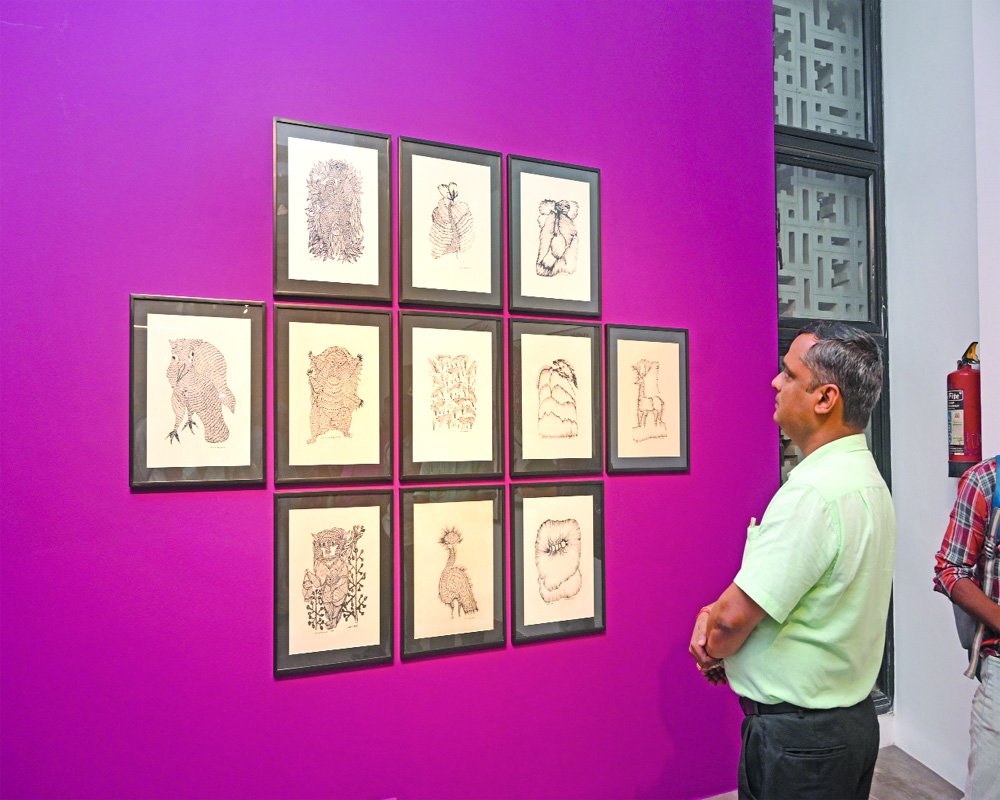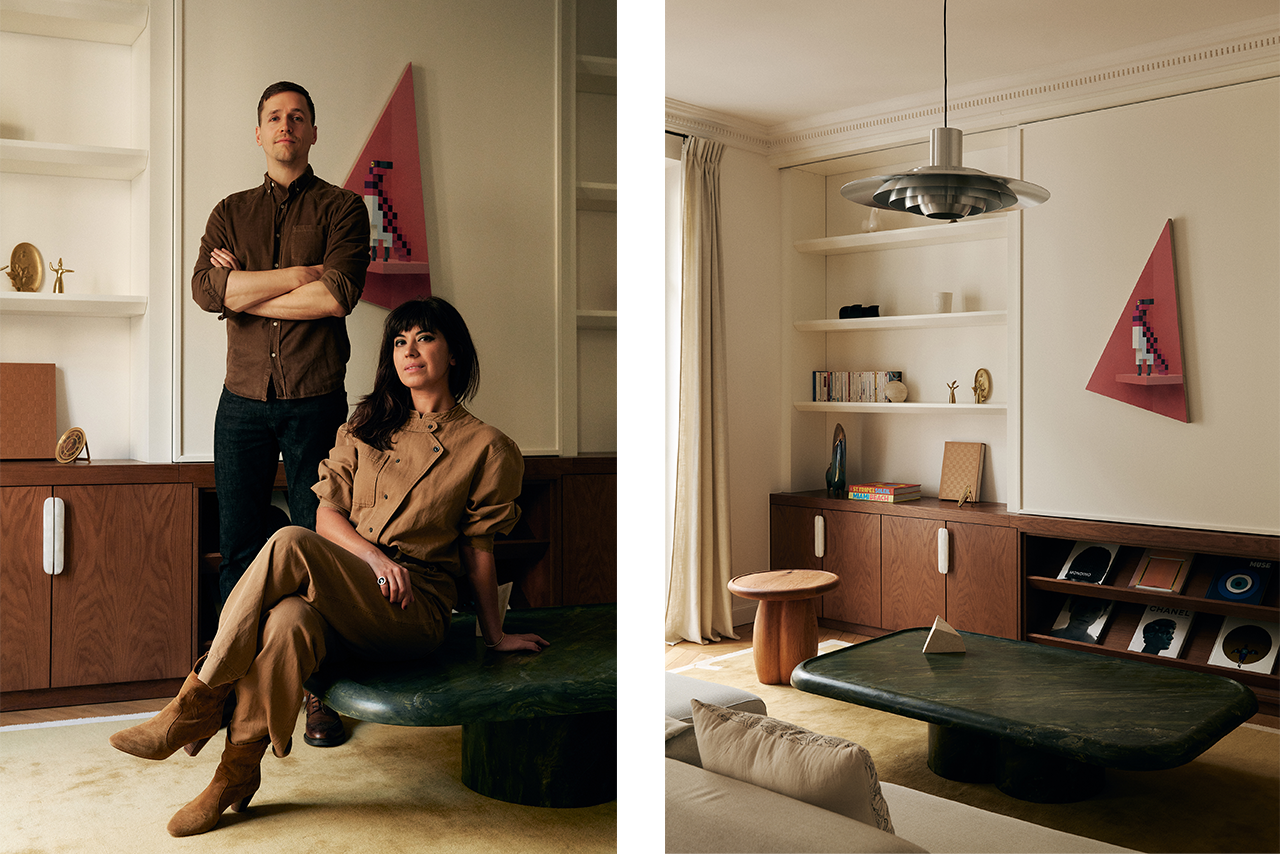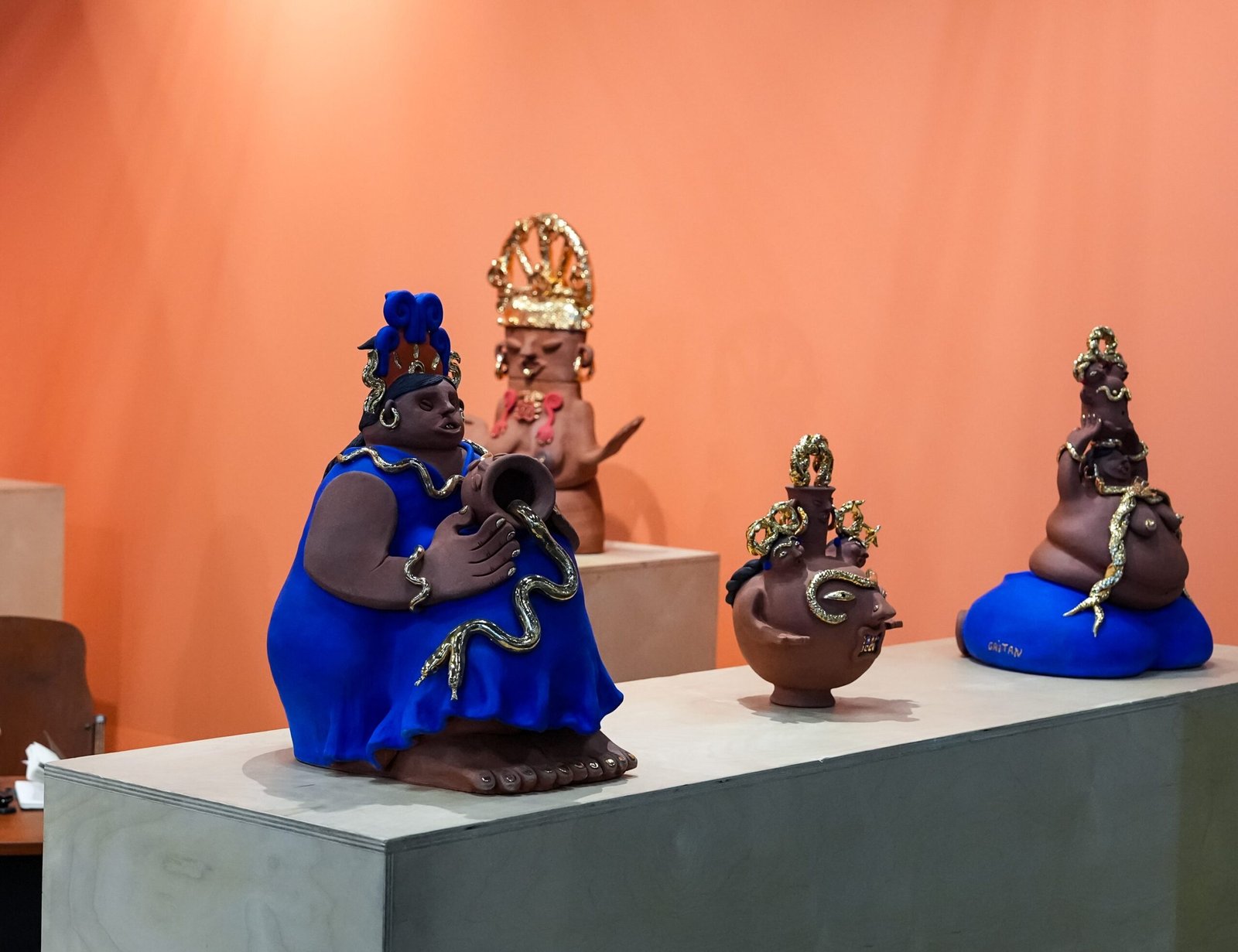In a world obsessed with originality, tribal art reminds us that innovation can be quiet. It lives in repetition, in symbols passed down through memory rather than manifestos
In a land where storytelling once travelled through forest paths and shrine walls, tribal art was never ornament, it was inheritance. It was art with purpose, a way of seeing, remembering, and belonging. In this visual grammar, myth breathes beside memory, and every line knows where it came from. Continuing the Songline: The Gond Legacy of Jangarh Kalam. The ongoing exhibition “Jangarh Kalam from Patangarh Continued” brings this truth to life with clarity and presence. The show, featuring 30 works by 18 Gond artists, stands as a cultural event rooted in the soil of Patangarh and raised with the hands of those who remember through paint rather than performance.
Tribal art in India has often been reduced to a ‘folk’ category or framed in anthropological terms. This exhibition moves away from such treatment. It places Gond painting, and specifically the Jangarh Kalam idiom, on the pedestal it commands — without sentimentality, because the work itself insists upon that position.
Jangarh Singh Shyam, the late master whose legacy anchors this exhibition, transformed the course of tribal art by turning inward. In the 1980s, encouraged by artist and cultural visionary J Swaminathan, he began to translate oral traditions and temple murals into a distinctive visual format. His style later recognised as Jangarh Kalam, is defined by intricate dotting, animated linework, and a surreal vocabulary of deities, animals, trees, and spirit-beings. What he initiated quickly evolved from a personal exploration into a collective vocabulary. Today, that movement continues through artists who carry the idiom forward with both care and conviction.
This exhibition, presented by the Raza Foundation and Progressive Art Gallery, in association with Triveni Kala Sangam, invites viewers into that continuation. The Gond artists featured, many of whom are Jangarh’s family, disciples, or artistic descendants, bring unique perspectives to the style. Menka Shyam’s compositions are filled with ancestral weight, while Phoolchand Dhurve’s densely packed images layer myths with lived experience. Rahul Shyam introduces urgency in his ecological themes, blending ancestral wisdom with the complications of contemporary life. These artists are not negotiating between tradition and modernity, they are building a language in which both speak together. The curatorial approach is subtle and deliberate. The viewer moves freely between mythological depictions, reflections on urban life, and images rooted in ecological thought.
There are also experimental works — scrolls, elongated panels, and pieces that explore the structure of movement and repetition. A tree becomes a universe; a bird, a message-bearer. Nothing seeks to impress. Everything is grounded in memory and belief.
The acquisition of the entire exhibition by Progressive Art Gallery marks a turning point in how tribal art is valued in India. By investing in all the works in advance, the gallery ensures that the participating artists are compensated with dignity. This show has a quiet power. It allows the viewer to slow down, to see the forest as consciousness. Many of the participating artists speak of painting as a form of listening.
As someone who has walked through countless galleries offering “immersive” experiences, this one stays with me for its lack of spectacle. The transformation happens internally. It changes how one sees place, story, and surface. It shifts the gaze from curiosity to connection. If legacy means keeping a vision alive through many hands, many eyes, and many voices, then the Gond artists of this exhibition are not maintaining a tradition. They are shaping its future.







